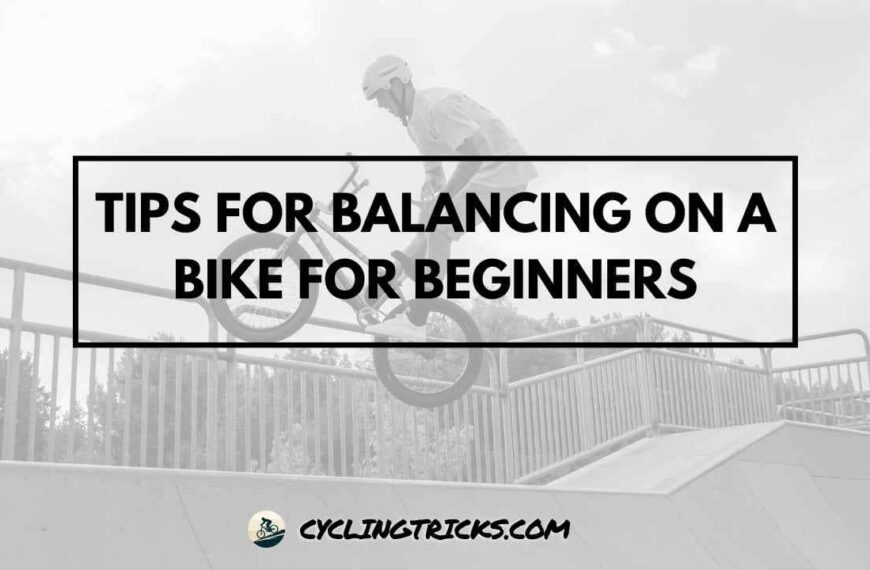As a cyclist, I know the importance of having a proper stretching routine before and after a ride. Not only does it prepare my muscles for the physical demands of cycling, but it also helps reduce the risk of injury and muscle soreness.
In this article, I’ll be sharing the essential stretches that every cyclist should incorporate into their stretching routine before and after a ride.
Whether you’re a beginner or a seasoned pro, these stretching exercises for cyclists will help improve your flexibility, increase your range of motion, and enhance your performance on the bike. So, let’s dive in and learn about the best stretching routine for cyclists.
Key Takeaways
- Stretching before and after a ride is essential for every cyclist
- Incorporating a proper stretching routine can reduce the risk of injury and muscle soreness
- Stretching improves flexibility, range of motion, and performance on the bike
- Dynamic stretches can mimic the movements performed during cycling
- Proper technique is crucial when performing stretching exercises for cycling
Why Stretching is Essential for Cyclists
As a cyclist, stretching should be an integral part of your daily routine. Incorporating stretching exercises for cyclists can improve your flexibility, increase your range of motion, and enhance your overall performance on the bike. When you stretch regularly, you prepare your muscles for the demands of a cycling workout and reduce the risk of injury.
Improved Flexibility
Stretching can help improve your flexibility and range of motion. It helps lengthen your muscles and reduce stiffness, giving you a wider range of motion when you cycle. By increasing your flexibility, you can improve your cycling posture and minimize the risk of muscle imbalances.
Increased Range of Motion
In addition to improving flexibility, stretching can also increase your range of motion. Stretching before and after a ride can help you maintain or improve joint range of motion, allowing you to move more efficiently and with less strain.
Enhanced Performance on the Bike
Stretching can improve your performance on the bike by increasing circulation, promoting better coordination, and enhancing muscular endurance. By incorporating stretches for cycling performance, you can increase your speed and power, and reduce the risk of fatigue during long rides.
Remember, Just a few minutes of stretching before and after cycling can make a world of difference in your overall health, performance, and enjoyment on the bike.
Pre-Ride Stretches for Cyclists
If you’re an avid cyclist, it’s important to take the time to properly warm up your muscles before heading out on a ride. Here are some essential pre-ride stretches for cyclists:
| Stretch | Instructions |
|---|---|
| Quad Stretch | While standing, bend one knee and bring your heel toward your glutes. Use your hand to hold your foot against your glute and hold for 20-30 seconds. Repeat on the other side. |
| Hamstring Stretch | Stand with your feet shoulder-width apart and extend one leg in front of you, heel on the ground. Bend forward at the waist and reach toward your toes, holding for 20-30 seconds. Repeat on the other side. |
| Hip Flexor Stretch | Kneel on one knee with your other foot flat on the ground in front of you. Gently push your hips forward until you feel a stretch in the front of your hip. Hold for 20-30 seconds and repeat on the other side. |
| Lower Back Stretch | Lie on your back and bring both knees in toward your chest. Hold for 20-30 seconds, then release. |
| Arm Rotations | Stand with your arms extended straight out to the sides. Slowly rotate your arms in small circles, gradually increasing the size of the circles. Reverse direction and repeat. |
Performing these stretches before your ride will help to warm up your muscles and increase blood flow to your legs, allowing you to perform at your best. Don’t forget to also incorporate some light cardio warm-up exercises, such as jumping jacks or running in place, to get your heart rate up and fully prepare your body for the ride ahead.
Post-Ride Stretches for Cyclists
After a long ride, it’s essential to take the time to cool down and stretch to reduce muscle soreness and promote recovery. Here are some post-ride stretches for cyclists:
| Stretch | Description |
|---|---|
| Quad stretch | Stand with your feet hip-width apart and grab your left ankle with your left hand. Pull your heel towards your glutes until you feel a stretch in your quadriceps. Hold for 20-30 seconds and repeat on the other side. |
| Hamstring stretch | Sit on the ground with your legs straight out in front of you. Reach forward and try to touch your toes, keeping your back flat. Hold for 20-30 seconds. |
| Calf stretch | Stand facing a wall with your hands on the wall at shoulder height. Place one foot behind the other and bend your front knee. Keep your back leg straight and heel on the ground. Hold for 20-30 seconds and repeat on the other side. |
| Child’s pose | Kneel on the ground and sit back on your heels. Reach your arms forward and lower your forehead to the ground. Hold for 20-30 seconds. |
Remember to hold each stretch for 20-30 seconds and breathe deeply throughout. These post-ride stretches will help your body recover and prepare for your next cycling adventure.
Stretches to Improve Cycling Performance
If you’re looking to take your cycling performance to the next level, incorporating stretching into your routine can help improve flexibility and range of motion. Targeting key muscle groups used during cycling, such as the hips, hamstrings, and quadriceps, these specific stretches can enhance your cycling performance:
| Stretch | Description |
|---|---|
| Hamstring stretch | Lie on your back with your legs extended. Slowly lift one leg towards the ceiling with both hands, keeping the knee straight. Hold for 15-30 seconds and repeat on the other side. |
| Quad stretch | Stand facing a wall or chair for balance. Grab your right ankle with your right hand and pull it towards your buttocks, keeping your knees together. Hold for 15-30 seconds and repeat on the other side. |
| Hip flexor stretch | Take a lunge stance with your right foot forward and your left knee on the ground. Shift your weight forward until you feel a stretch in your left hip. Hold for 15-30 seconds and repeat on the other side. |
| Low back stretch | Sit on the ground with your legs extended in front of you. Cross your right leg over your left and place your right foot on the ground. Use your left elbow to gently twist your upper body to the right. Hold for 15-30 seconds and repeat on the other side. |
These stretches can be performed before or after a ride, or at any time during the day to increase your flexibility and enhance your cycling performance. As always, be sure to stretch gently and avoid bouncing or jerking movements to prevent injury.
Stretching to Prevent Cycling Injuries
As a cyclist, it’s essential to take measures to prevent injuries that can negatively affect your performance and well-being. One of the most effective ways to minimize the risk of cycling injuries is by incorporating stretches that focus on improving flexibility and range of motion.
Regular stretching before and after a ride can help prepare your muscles for physical activity and reduce muscle soreness and stiffness. It can also help improve your overall cycling performance by keeping you limber and enhancing your body’s ability to absorb shock and stress.
Stretches to Prevent Common Cycling Injuries
| Injury | Stretch |
|---|---|
| Lower back pain | Cat/Cow Stretch: Begin on your hands and knees with your wrists under your shoulders and your knees under your hips. Inhale and arch your back, bringing your head up towards the ceiling. Exhale and round your spine, tucking your chin to your chest. Repeat for several breaths. |
| Knee pain | Quad Stretch: Stand facing a wall or a chair. Reach back with one hand and grab your ankle. Pull your heel towards your buttocks while keeping your knees together. Hold for 20-30 seconds and switch sides. |
| Shoulder pain | Shoulder Extension: Sit on a chair with your feet flat on the ground. Clasp your hands behind your back and lift them up as high as you can. Hold for 20-30 seconds and slowly release. |
Remember to hold each stretch for at least 20-30 seconds and avoid bouncing or jerking movements. If you have any existing injuries or pain, speak to a healthcare provider or a physical therapist before performing any stretches.
Incorporating stretches into your daily routine can help prevent cycling injuries and improve your overall cycling performance. Remember to warm up with pre-ride stretches and cool down with post-ride stretches to aid your body’s recovery and minimize muscle soreness.
Dynamic Stretches for Cyclists
If you’re looking to step up your stretching routine, dynamic stretches are the way to go. Unlike static stretches that involve holding a stretch for a period of time, dynamic stretches are active movements that mimic the movements performed during cycling. By getting your muscles moving in this way, you’ll be better prepared for the demands of your ride.
Some examples of dynamic stretches for cyclists include:
| Stretch | Description |
|---|---|
| Leg swings | Stand facing a wall with your hands on the wall for support. Swing one leg forward and back, then swing it side to side. Repeat on the other leg. |
| Walking lunges | Step forward with one leg and lower your body down until your back knee nearly touches the ground. Push back up and repeat on the other leg. |
| High knees | Stand with your feet hip-width apart and lift one knee up towards your chest. Lower it back down and repeat on the other leg. |
Dynamic stretches are an excellent addition to any cyclist’s stretching routine, but it’s important to note that they should be done after a proper warm-up. It’s advisable to perform dynamic stretches after going through a series of static stretches to properly prepare and warm up your muscles.
By incorporating dynamic stretches into your routine, you’ll be setting yourself up for a successful and injury-free ride.
Creating a Stretching Routine for Cyclists
Stretching is an essential part of every cyclist’s routine, but it’s important to create a stretching plan that is tailored to your specific needs and schedule. Here are some cyclist stretching tips to help you create an effective stretching routine:
- Choose your stretches wisely: Focus on stretches that target the key muscle groups used during cycling, such as the hips, hamstrings, and quadriceps. Incorporate both static (holding stretches) and dynamic (active movement stretches) stretches into your routine.
- Determine your ideal frequency: The frequency of stretching depends on your level of activity and training intensity. Aim to stretch at least once a day, preferably after your ride when your muscles are warm and pliable.
- Decide on the duration of your stretches: Holding stretches for at least 30 seconds is ideal to achieve maximum benefits. However, beginners should start with shorter durations and gradually increase them over time; don’t push yourself too hard.
- Start with a warm-up: Begin your stretching routine with a short warm-up to get your blood circulating. You can do this by cycling on a stationary bike or performing some light aerobic exercise.
- Be consistent: Consistency is key to achieving your stretching goals. Make stretching part of your routine, and try to do it at the same time every day if possible.
- Listen to your body: Always listen to your body and avoid pushing yourself too hard. If you feel pain or discomfort during a stretch, stop immediately.
By following these cyclist stretching tips, you can create a comprehensive stretching routine that promotes increased flexibility, better performance, and injury prevention. Remember – stretching is just as important to your overall cycling routine as training and nutrition.
Proper Technique for Stretching
Stretching can be an effective way to improve flexibility, reduce muscle soreness, and prevent injuries for cyclists. However, it’s important to perform each stretch correctly to avoid causing any harm. Here are some tips for proper technique:
Hold Each Stretch
It’s important to hold each stretch for at least 20-30 seconds. This allows your muscles to fully relax and lengthen, increasing your flexibility over time.
Avoid Bouncing
Bouncing or jerking movements during stretching can cause injury. Instead, perform a slow, gentle stretch and hold it in place for the recommended amount of time.
Perform Stretches on Both Sides
Make sure to perform stretches on both sides of your body to maintain balance and prevent muscle imbalances that can lead to injuries.
Breathe Normally
Throughout each stretch, breathe normally and try to relax your body as much as possible.
By following these tips, you can perform stretches safely and effectively to enhance your cycling performance and reduce the risk of injuries.
Other Considerations for Cyclists
Stretching is just one way to improve your performance and prevent injuries while cycling. Here are some other things to consider:
- Cross-training: Incorporating other activities such as yoga or strength training can enhance your cycling performance and prevent overuse injuries.
- Foam rolling: Using a foam roller can help release tension in your muscles and improve flexibility.
- Self-massage techniques: Using a lacrosse ball or massage stick to target specific muscle groups can help reduce soreness and promote recovery.
| Tip | Benefits |
|---|---|
| Try a yoga class | In addition to building flexibility, yoga can help build core strength, which is important for cycling. |
| Strength train twice a week | Building strength in your legs, core, and upper body can improve your cycling performance and reduce the risk of injury. |
| Add foam rolling to your routine | Using a foam roller can help improve flexibility and reduce muscle soreness after a ride. |
| Use a lacrosse ball for self-massage | Targeting specific muscle groups with a lacrosse ball can help reduce tension and soreness. |
By incorporating these other considerations along with stretching, you can improve your overall cycling performance and reduce the risk of injury.
Conclusion
In conclusion, incorporating a stretching routine before and after cycling is crucial for improving performance and preventing injuries. By performing pre-ride stretches, cyclists can warm up their muscles and prepare their bodies for the demands of cycling. Post-ride stretches help reduce muscle soreness and promote recovery. In addition, dynamic stretches can mimic the movements performed during cycling and enhance overall flexibility.
Creating a stretching routine that fits your individual needs and schedule is essential. Remember to hold stretches for an adequate amount of time and avoid bouncing or jerking movements. Consider using foam rollers, self-massage techniques, and cross-training exercises to complement stretching and promote optimal results.
Incorporating essential stretches into your cycling routine can help you reach your personal best and prevent injuries. So, start stretching today and experience the benefits of improved cycling performance.





![Safety Tips for Cycling in Bad Weather [Rain, Fog, & Wind]](https://cyclingtricks.com/wp-content/uploads/2024/01/Safety-Tips-for-Cycling-in-Bad-Weather-Rain-Fog-Wind-870x570.jpg)



